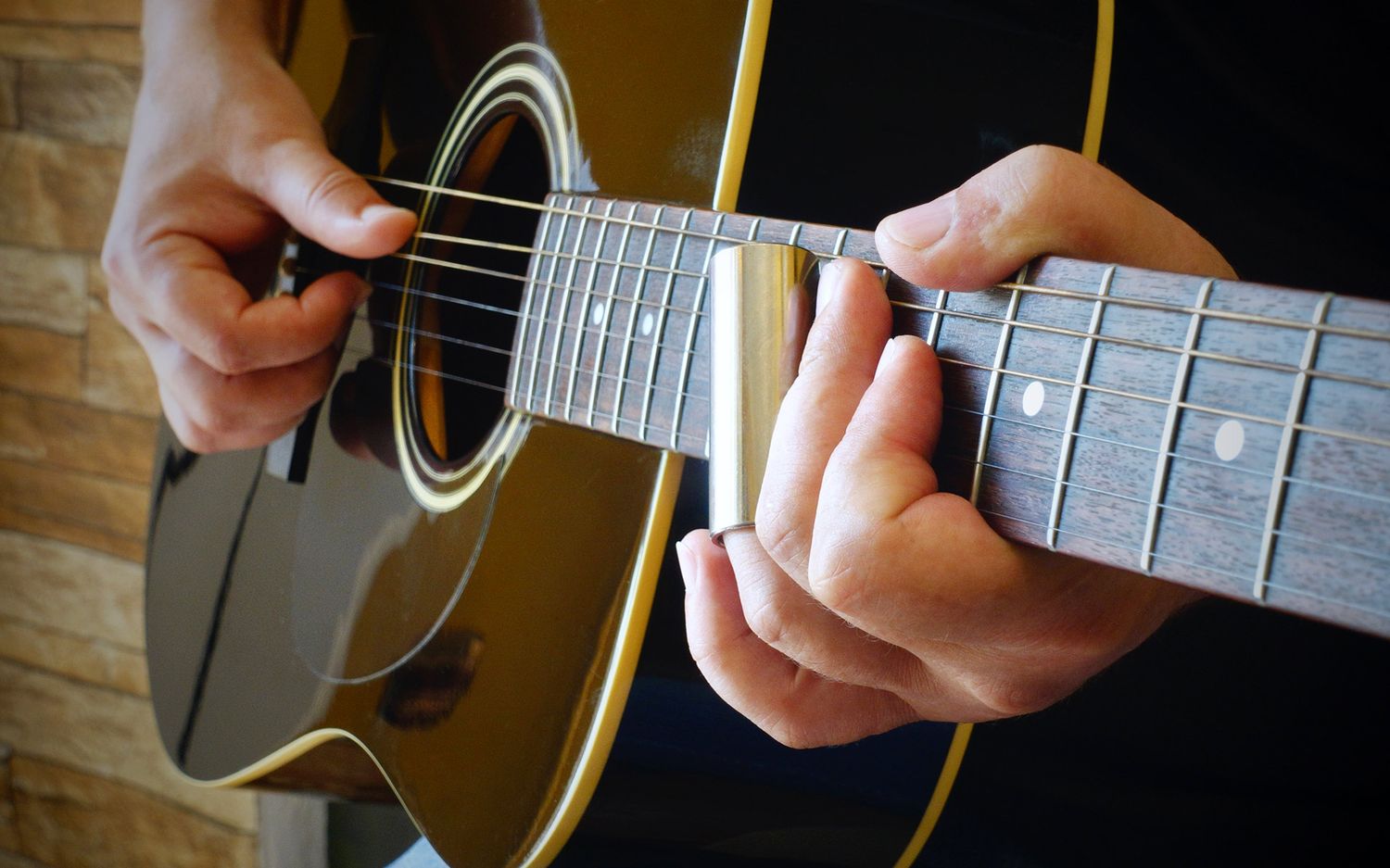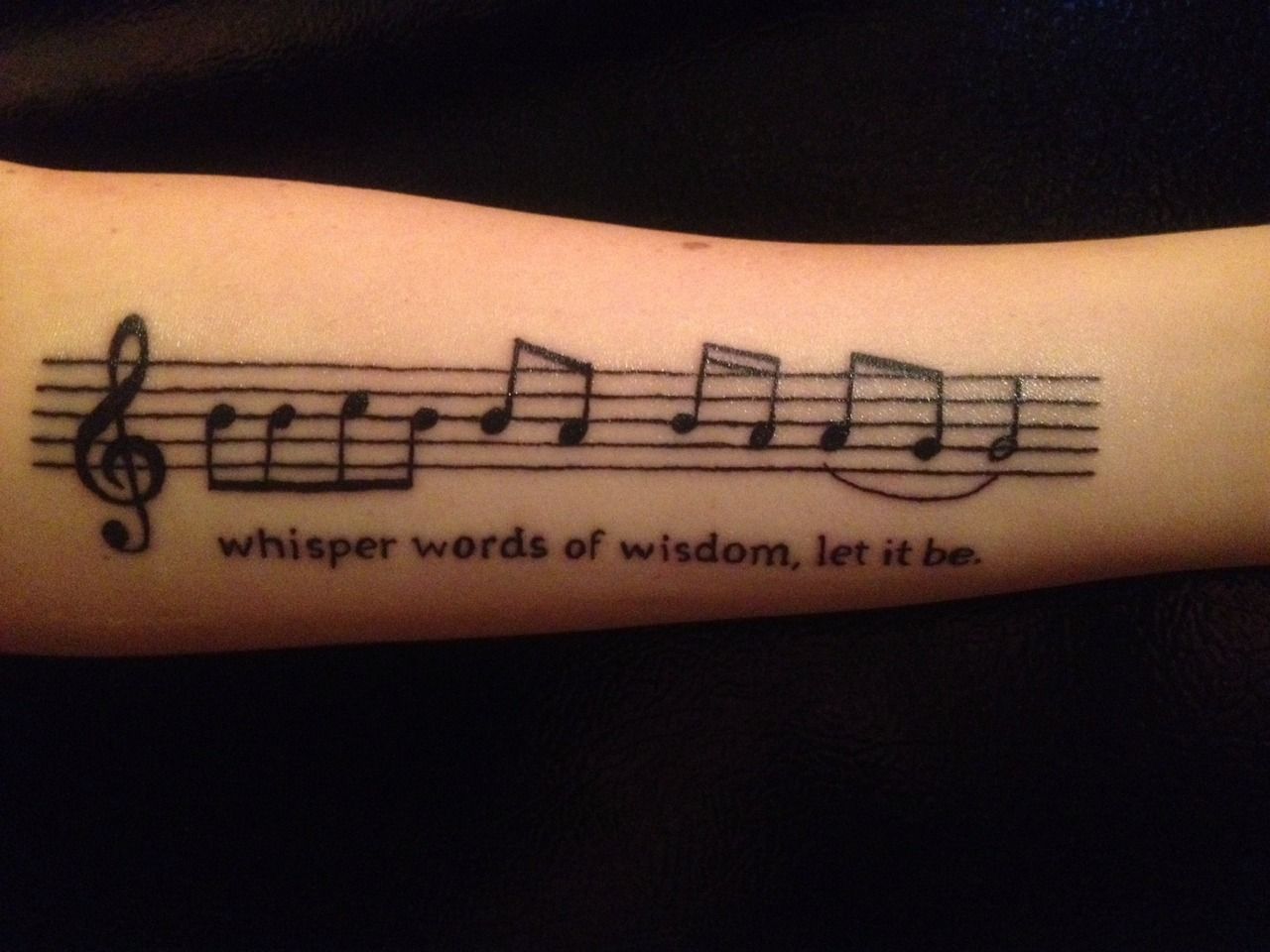Home>Production & Technology>Music Theory>What Does Diatonic In Music Theory Mean


Music Theory
What Does Diatonic In Music Theory Mean
Published: January 30, 2024
Discover the meaning of diatonic in music theory with this comprehensive guide. Explore the fundamental principles and concepts of music theory and enhance your understanding.
(Many of the links in this article redirect to a specific reviewed product. Your purchase of these products through affiliate links helps to generate commission for AudioLover.com, at no extra cost. Learn more)
Table of Contents
Introduction
Welcome to the fascinating world of music theory! Whether you’re a music student, a composer, or simply a curious music lover, understanding the concepts and principles of music theory can greatly enhance your appreciation and enjoyment of music. One important concept in music theory is the idea of “diatonic.”
Diatonic is a term that frequently arises in discussions about scales, chords, and harmonies. It is a fundamental concept that forms the basis of much of Western music. In this article, we will explore the meaning of diatonic and its applications in music theory.
Before we dive into the specifics, it’s essential to note that a solid understanding of basic music theory concepts, such as scales and intervals, will be beneficial as we delve into the world of diatonicism.
So, let’s begin our journey into the world of diatonic by first defining its meaning in the context of music theory.
Definition of Diatonic
Diatonic, in music theory, refers to a specific system of scales and intervals that are derived from the major scale. The term comes from the Greek words “dia” meaning “through” or “across” and “tonos” meaning “tone” or “pitch.”
In simple terms, diatonic can be understood as a set of notes or pitches that are arranged in a specific pattern of whole and half steps, resulting in a distinct musical sound and structure. It forms the foundation for much of Western music and is widely used across various genres and styles.
The essence of diatonicism lies in the organization of pitches within a scale. The diatonic scale consists of seven unique pitches, which are often referred to as scale degrees or degrees of the scale. Each degree of the scale has a specific relationship with the tonic, or the first note of the scale, creating a hierarchical structure.
One crucial aspect of diatonicism is the presence of both consonance and dissonance within the scale. Consonant intervals, such as the perfect fifth and major third, create a sense of stability and harmony, while dissonant intervals, such as the minor second and tritone, introduce tension and create a need for resolution.
It is important to note that diatonicism is not limited to a specific scale or mode but rather encompasses a system of intervals and relationships that can be applied to different scales and keys.
The diatonic system provides a framework for composing and analyzing music, allowing musicians and composers to understand the relationships between notes and chords within a particular key. It serves as a tool for creating melodies, harmonies, and chord progressions that sound pleasing to the ear and adhere to the principles of tonality.
Overall, diatonicism forms the backbone of Western tonal music, providing a structure and framework that guides composers and musicians in their creative endeavors. Its significance cannot be overstated, and a solid understanding of diatonic principles is essential for anyone seeking to deepen their understanding of music theory.
Diatonic Scales
Now that we have a clear understanding of what diatonic means, let’s explore the different types of diatonic scales. A diatonic scale is a specific arrangement of notes or pitches that follow the diatonic system of intervals and relationships.
The two most common types of diatonic scales are the major diatonic scale and the natural minor diatonic scale. Both of these scales are derived from the major scale and share similar characteristics but have different patterns of whole and half steps.
The major diatonic scale, also known as the Ionian mode, is perhaps the most well-known and frequently used diatonic scale. It is the basis for much of Western music and consists of a pattern of whole, whole, half, whole, whole, whole, half steps. This scale has a bright and uplifting sound and is often associated with happiness and optimism.
On the other hand, the natural minor diatonic scale, also known as the Aeolian mode, has a more melancholic and introspective quality. It follows a pattern of whole, half, whole, whole, half, whole, whole steps. The natural minor scale can evoke a sense of sadness or mystery and is commonly used in various musical genres, such as classical, jazz, and pop.
It’s worth noting that these two scales are just the tip of the iceberg when it comes to diatonicism. There are modes, variations, and other scales that fall under the umbrella of diatonic, each with its unique sound and flavor.
Additionally, the diatonic scale system can be applied to different keys, allowing for the exploration of various tonalities and moods. By understanding the patterns and principles of diatonic scales, musicians can navigate different keys and create melodies and harmonies that fit within a specific key signature.
Diatonic scales provide a structured framework for understanding and creating melodies, harmonies, and chord progressions. They serve as the building blocks for musical compositions and improvisations and are an essential tool for musicians and composers alike.
Whether you’re playing a beautiful melody on a piano or improvising a soulful guitar solo, a solid understanding of diatonic scales can open up new possibilities and help you express yourself more confidently and creatively in your musical endeavors.
Major Diatonic Scale
The major diatonic scale, also known as the Ionian mode, is a foundational scale in music theory. It is incredibly versatile and widely used across various genres and styles of music.
The major diatonic scale follows a specific pattern of whole steps (W) and half steps (H), which gives it its distinctive sound and character. The pattern for the major diatonic scale is as follows: W-W-H-W-W-W-H.
Let’s take a closer look at this pattern using the key of C major as an example:
- C – D – E – F – G – A – B – C
- W – W – H – W – W – W – H
As we can see, the major diatonic scale in the key of C starts on C and follows the pattern of whole and half steps. This pattern can be applied to any starting note to generate a major diatonic scale in different keys.
The major diatonic scale is often associated with a bright and uplifting sound. It is widely used in popular music, classical music, jazz, and many other genres. Melodies and harmonies built on the major diatonic scale tend to sound consonant and pleasing to the ear.
Within the major diatonic scale, there are specific degrees or steps that have distinct functions. The tonic, or the first degree, serves as the resolution point and feels like “home” within the scale. The dominant (fifth degree) and subdominant (fourth degree) are commonly used to create tension and release in chord progressions.
Knowing the major diatonic scale allows musicians to create melodies, harmonies, and chord progressions that are rooted in a specific key. It provides a framework for improvisation and composition, enabling musicians to explore different tonalities and express themselves effectively.
It’s important to note that the major diatonic scale is just one of the many diatonic scales available. Each major diatonic scale variation in different keys has its unique tonal qualities, and musicians can explore and experiment with different scales to create diverse musical expressions.
By mastering the major diatonic scale and understanding its patterns and relationships, musicians can expand their musical vocabulary and create melodies and harmonies that are engaging, melodic, and structurally sound.
Natural Minor Diatonic Scale
The natural minor diatonic scale, also known as the Aeolian mode, is an essential scale in music theory. It has a distinct sound and is commonly used in various genres, including classical, jazz, and pop.
The natural minor diatonic scale follows a specific pattern of whole steps (W) and half steps (H), which gives it a unique mood and character. The pattern for the natural minor diatonic scale is as follows: W-H-W-W-H-W-W.
Let’s take a closer look at this pattern using the key of A minor as an example:
- A – B – C – D – E – F – G – A
- W – H – W – W – H – W – W
In the key of A minor, the natural minor diatonic scale starts on A and follows the pattern of whole and half steps. This pattern can be applied to any starting note to generate the natural minor diatonic scale in different keys.
The natural minor diatonic scale is often associated with a melancholic and introspective sound. It can evoke feelings of sadness, mystery, and introspection. Many haunting melodies and emotional chord progressions are built on the foundation of the natural minor diatonic scale.
Similar to the major diatonic scale, the natural minor diatonic scale has specific degrees or steps that have distinct functions. The tonic (first degree) serves as the primary point of resolution, while the dominant (fifth degree) and subdominant (fourth degree) create tension and release within the scale.
Having a solid understanding of the natural minor diatonic scale allows musicians to create melodies, harmonies, and chord progressions that capture the unique mood and emotion associated with this scale. It provides a framework for composing and improvising in minor keys and expands the musical possibilities for expression.
It’s important to note that there are variations and modes within the natural minor diatonic scale that can further influence the tonality and sound of a piece of music. Exploring these variations can add depth and complexity to compositions or improvisations.
By delving into the intricacies of the natural minor diatonic scale and exploring its patterns and relationships, musicians can unlock a world of creativity and incorporate the rich emotional qualities of this scale into their musical compositions and performances.
Modes of the Diatonic Scale
Within the diatonic scale system, there are seven modes that offer different tonalities and moods. Each mode is derived from the diatonic scale by starting and ending on a different scale degree. Understanding and exploring these modes can expand your musical vocabulary and add depth to your compositions and improvisations.
Let’s take a closer look at the modes of the diatonic scale, using the key of C major as our reference:
- Ionian Mode (Major Scale): The Ionian mode is the familiar major scale, starting and ending on the tonic (C in the key of C major). It has a bright and uplifting quality, and its formula is W-W-H-W-W-W-H.
- Dorian Mode: The Dorian mode starts and ends on the second degree of the major scale (D in the key of C major). It has a minor feel with a slightly brighter sound compared to the natural minor scale. Its formula is W-H-W-W-W-H-W.
- Phrygian Mode: The Phrygian mode starts and ends on the third degree of the major scale (E in the key of C major). It has a Spanish or exotic sound and is often associated with flamenco music. Its formula is H-W-W-W-H-W-W.
- Lydian Mode: The Lydian mode starts and ends on the fourth degree of the major scale (F in the key of C major). It has a bright and dreamy quality with a raised fourth degree, giving it a unique sound. Its formula is W-W-W-H-W-W-H.
- Mixolydian Mode: The Mixolydian mode starts and ends on the fifth degree of the major scale (G in the key of C major). It has a bluesy and rock-oriented sound and is commonly used in blues and rock music. Its formula is W-W-H-W-W-H-W.
- Aeolian Mode (Natural Minor Scale): The Aeolian mode is the natural minor scale, starting and ending on the sixth degree of the major scale (A in the key of C major). It has a melancholic and introspective quality, commonly associated with minor keys. Its formula is W-H-W-W-H-W-W.
- Locrian Mode: The Locrian mode starts and ends on the seventh degree of the major scale (B in the key of C major). It has a dissonant and unresolved sound due to its diminished fifth interval. It is the least used mode in Western music. Its formula is H-W-W-H-W-W-W.
Exploring these modes opens up a world of possibilities in terms of melody, harmony, and chord progressions. Each mode has its unique flavor and character, allowing musicians to evoke different emotions and create diverse musical expressions.
By incorporating different modes into your compositions and improvisations, you can add depth, complexity, and a sense of variety to your music. Experimenting with these modes and understanding their unique characteristics can broaden your musical horizons and elevate your musicality.
Diatonic Harmony
In music theory, diatonic harmony refers to the chords and harmonies that are derived from the diatonic scale. It is the foundation of Western tonal music and plays a crucial role in creating a sense of structure, tension, and release within a musical composition.
Diatonic harmony is built upon the principle of chord progressions that are constructed using the notes of a diatonic scale in a particular key. These chords are formed by stacking diatonic intervals in thirds, resulting in a harmonically pleasing and coherent sound.
Let’s use the key of C major as an example to understand diatonic harmony. In the key of C major, the diatonic chords are as follows:
- I – C major
- ii – D minor
- iii – E minor
- IV – F major
- V – G major
- vi – A minor
- vii° – B diminished
The Roman numerals indicate the scale degrees that correspond to each chord. For example, the I chord represents the tonic, or the first degree of the scale, which is C major in this case.
Diatonic harmonies provide a sense of resolution and stability when used in a composition. The I (tonic) and IV (subdominant) chords are considered stable and consonant, while the V (dominant) chord creates tension and acts as a natural point of resolution back to the tonic.
Understanding diatonic harmony allows musicians to create chord progressions that flow smoothly and naturally. It provides a framework for constructing rich harmonies and lush progressions that complement melodies and evoke specific emotions.
In addition to the basic triad chords, diatonic harmony also incorporates extended chords and alterations. These include seventh chords (such as dominant 7th and major 7th chords), as well as non-diatonic chords that add color and complexity to a composition.
By exploring diatonic harmony, musicians can manipulate these chords, experiment with different progressions, and create unique arrangements and interpretations of musical pieces. This understanding of harmony is essential for composers, songwriters, and improvising musicians.
Overall, diatonic harmony forms the backbone of tonal music, providing a solid foundation upon which melodies, harmonies, and chord progressions are built. It is a powerful tool that allows musicians to create music that is harmonically pleasing and emotionally resonant.
Conclusion
In conclusion, diatonicism is a fundamental concept in music theory that encompasses scales, chords, and harmonies derived from the diatonic scale. Understanding diatonic principles is essential for musicians, composers, and music enthusiasts of all levels.
Through the exploration of diatonic scales, such as the major diatonic scale and the natural minor diatonic scale, musicians can create melodies and harmonies that are structured, pleasing to the ear, and convey specific emotions. The major diatonic scale has a bright and uplifting sound, while the natural minor diatonic scale evokes a more melancholic and introspective mood.
Additionally, the modes of the diatonic scale offer a wide range of tonalities and flavors that can enhance musical compositions. Each mode has its unique character, allowing musicians to convey different emotions and create diverse musical expressions.
Diatonic harmony forms the backbone of Western tonal music, providing a framework for constructing chord progressions and harmonies that add depth and structure to musical compositions. By understanding the relationships between chords within a specific key, musicians can create harmonically pleasing and emotionally engaging music.
Whether you’re a musician, composer, or simply a music lover, delving into the world of diatonic theory opens up a rich realm of possibilities. It unlocks the tools to compose, improvise, and appreciate music on a deeper level.
So, take the time to explore the diatonic scale, experiment with diatonic harmony, and let the sounds and concepts of diatonicism inspire and guide your musical journey. Understanding and applying diatonic principles will undoubtedly enhance your musicality and enrich your musical experiences.











